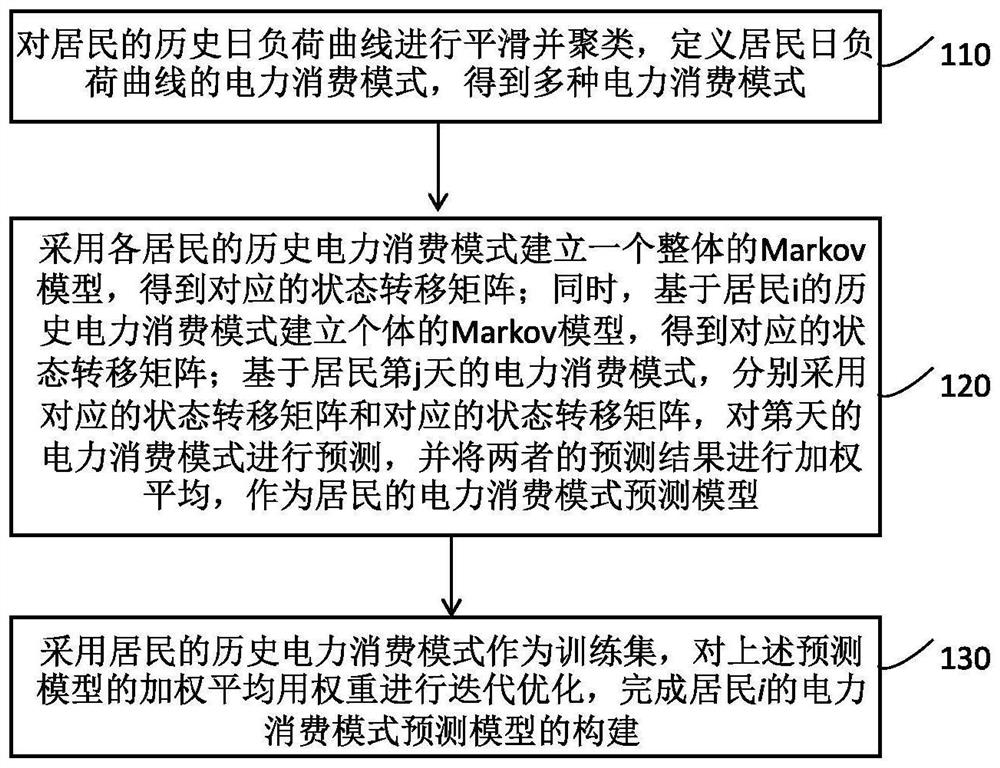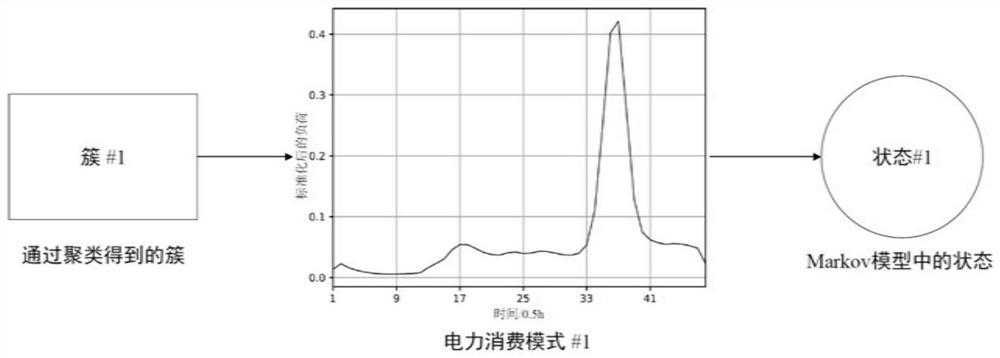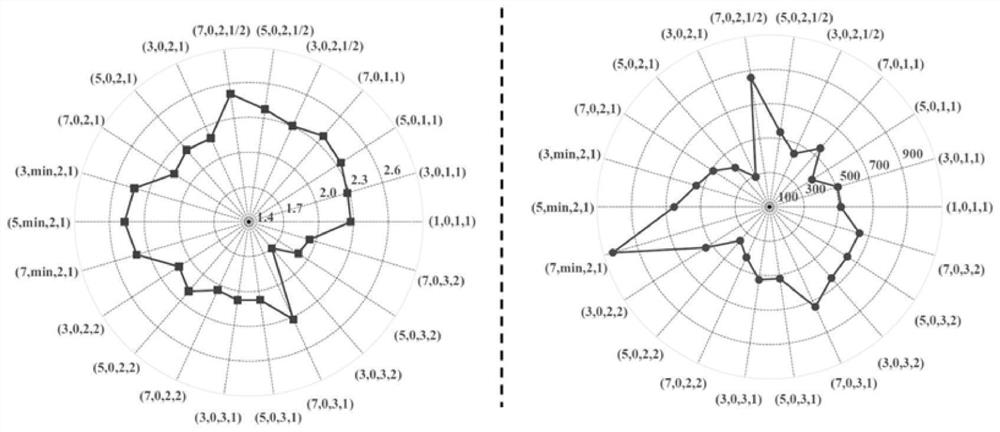Construction method and application of resident power consumption mode prediction model
A technology for forecasting models and building methods, applied in forecasting, data processing applications, character and pattern recognition, etc., can solve problems such as difficulty in load forecasting, and achieve the effect of good model stability
- Summary
- Abstract
- Description
- Claims
- Application Information
AI Technical Summary
Problems solved by technology
Method used
Image
Examples
Embodiment 1
[0045] A method for constructing a prediction model of household electricity consumption pattern 10, such as figure 1 shown, including:
[0046] 110. Smooth and cluster the historical daily load curve of the residents, define the power consumption mode of the residents' daily load curve, and obtain a variety of power consumption modes;
[0047] 120. Establish an overall Markov model M using the historical electricity consumption patterns of each inhabitant 0 , get M 0 The corresponding state transition matrix; at the same time, an individual Markov model M is established based on the historical power consumption pattern of the resident i i , get M i Corresponding state transition matrix; based on the electricity consumption pattern of resident i on the jth day, respectively adopt M 0 The corresponding state transition matrix and M i The corresponding state transition matrix is used to predict the electricity consumption pattern of day j+1, and the weighted average of th...
Embodiment 2
[0087] A method for predicting a residential electricity consumption pattern, comprising:
[0088] The electricity consumption pattern prediction model of resident i constructed by the method for constructing a resident electricity consumption pattern prediction model described in the first embodiment is used, and the electricity consumption pattern of resident i on the current day is input to obtain the electricity consumption pattern probability of resident i on the next day. distribution to complete the prediction of power consumption patterns. The related technical solutions are the same as those in the first embodiment, and are not repeated here.
Embodiment 3
[0090] A method for predicting daily load data of residents, comprising:
[0091] Using the load data predictor corresponding to each power consumption mode that has been trained, input the daily load data of resident i on the current day respectively, and obtain the daily load data corresponding to each power consumption mode of resident i on the next day;
[0092] based on Calculate the daily load data of resident i for the next day;
[0093] in, represents the probability that the electricity consumption pattern of resident i in the next day belongs to electricity consumption pattern k, represents the daily load data corresponding to the predicted electricity consumption pattern k of the next day of resident i; Represents the daily load data corresponding to the electricity consumption pattern k of the next day of the resident i predicted by the integration method.
[0094] That is, in order to solve the above-mentioned problem that a single resident corresponds to ...
PUM
 Login to View More
Login to View More Abstract
Description
Claims
Application Information
 Login to View More
Login to View More - R&D
- Intellectual Property
- Life Sciences
- Materials
- Tech Scout
- Unparalleled Data Quality
- Higher Quality Content
- 60% Fewer Hallucinations
Browse by: Latest US Patents, China's latest patents, Technical Efficacy Thesaurus, Application Domain, Technology Topic, Popular Technical Reports.
© 2025 PatSnap. All rights reserved.Legal|Privacy policy|Modern Slavery Act Transparency Statement|Sitemap|About US| Contact US: help@patsnap.com



